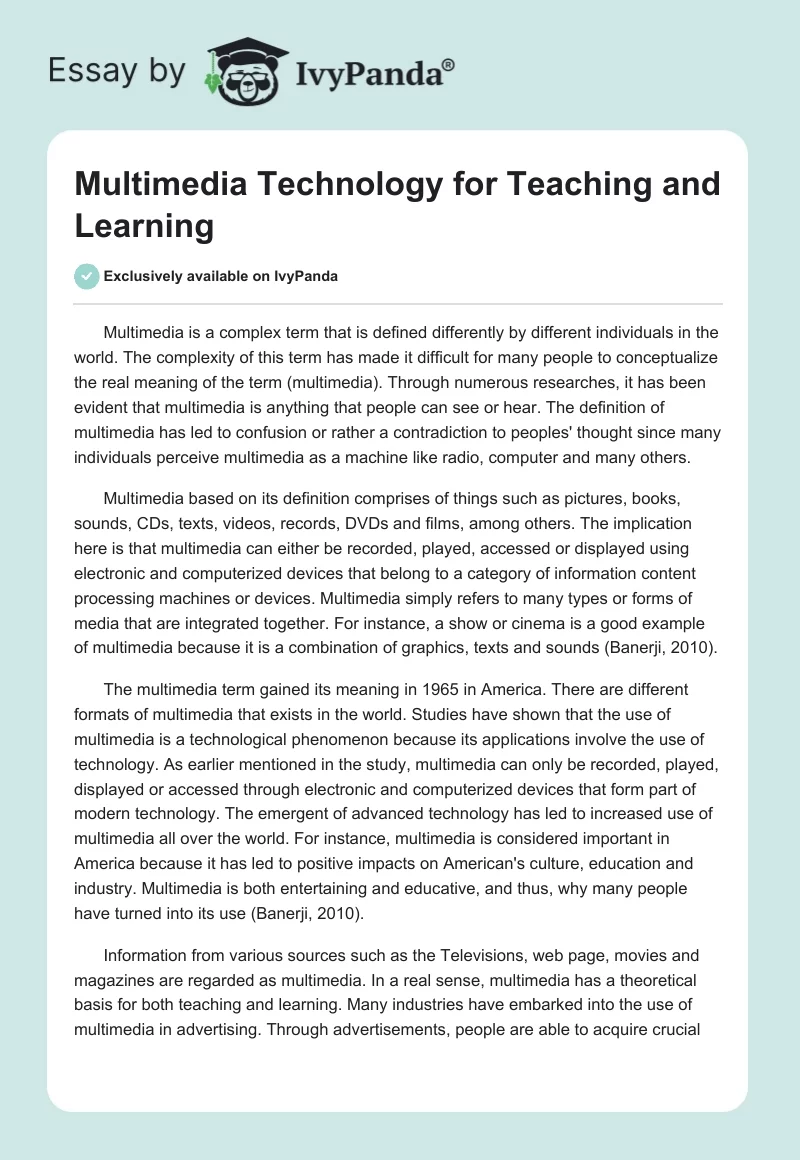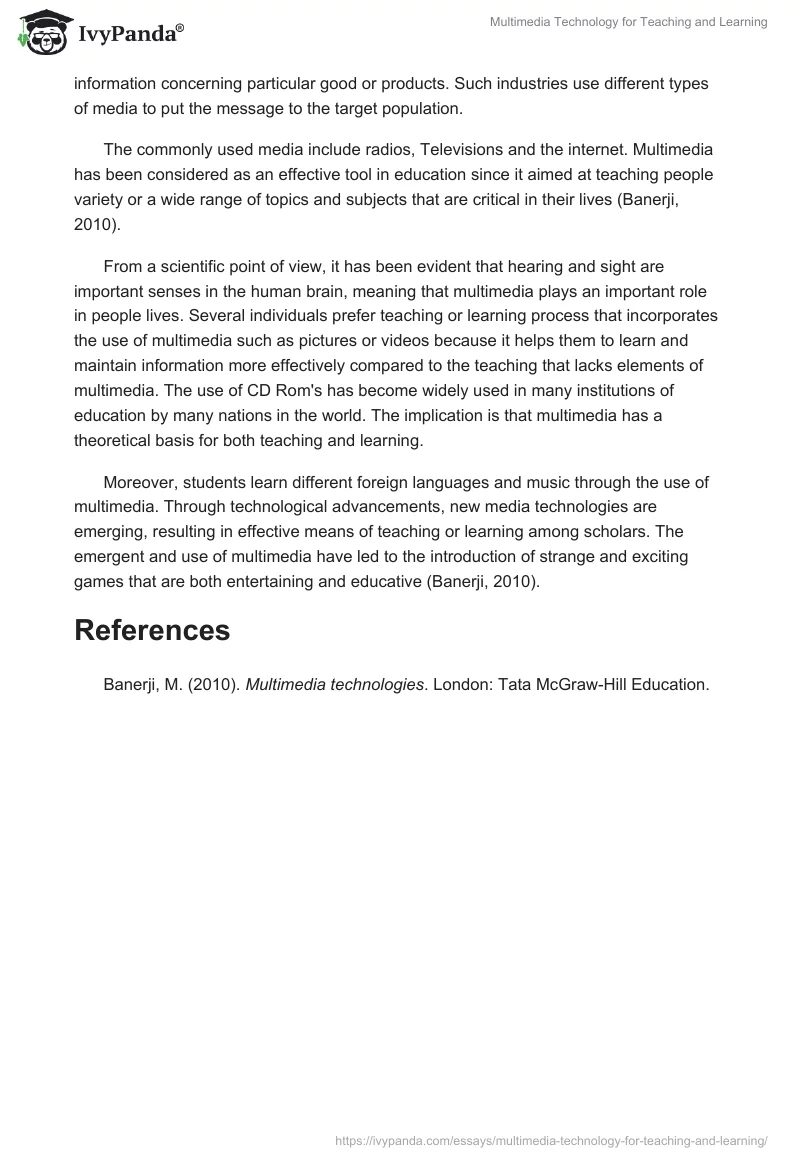Multimedia is a complex term that is defined differently by different individuals in the world. The complexity of this term has made it difficult for many people to conceptualize the real meaning of the term (multimedia). Through numerous researches, it has been evident that multimedia is anything that people can see or hear. The definition of multimedia has led to confusion or rather a contradiction to peoples’ thought since many individuals perceive multimedia as a machine like radio, computer and many others.
Multimedia based on its definition comprises of things such as pictures, books, sounds, CDs, texts, videos, records, DVDs and films, among others. The implication here is that multimedia can either be recorded, played, accessed or displayed using electronic and computerized devices that belong to a category of information content processing machines or devices. Multimedia simply refers to many types or forms of media that are integrated together. For instance, a show or cinema is a good example of multimedia because it is a combination of graphics, texts and sounds (Banerji, 2010).
The multimedia term gained its meaning in 1965 in America. There are different formats of multimedia that exists in the world. Studies have shown that the use of multimedia is a technological phenomenon because its applications involve the use of technology. As earlier mentioned in the study, multimedia can only be recorded, played, displayed or accessed through electronic and computerized devices that form part of modern technology. The emergent of advanced technology has led to increased use of multimedia all over the world. For instance, multimedia is considered important in America because it has led to positive impacts on American’s culture, education and industry. Multimedia is both entertaining and educative, and thus, why many people have turned into its use (Banerji, 2010).
Information from various sources such as the Televisions, web page, movies and magazines are regarded as multimedia. In a real sense, multimedia has a theoretical basis for both teaching and learning. Many industries have embarked into the use of multimedia in advertising. Through advertisements, people are able to acquire crucial information concerning particular good or products. Such industries use different types of media to put the message to the target population.
The commonly used media include radios, Televisions and the internet. Multimedia has been considered as an effective tool in education since it aimed at teaching people variety or a wide range of topics and subjects that are critical in their lives (Banerji, 2010).
From a scientific point of view, it has been evident that hearing and sight are important senses in the human brain, meaning that multimedia plays an important role in people lives. Several individuals prefer teaching or learning process that incorporates the use of multimedia such as pictures or videos because it helps them to learn and maintain information more effectively compared to the teaching that lacks elements of multimedia. The use of CD Rom’s has become widely used in many institutions of education by many nations in the world. The implication is that multimedia has a theoretical basis for both teaching and learning.
Moreover, students learn different foreign languages and music through the use of multimedia. Through technological advancements, new media technologies are emerging, resulting in effective means of teaching or learning among scholars. The emergent and use of multimedia have led to the introduction of strange and exciting games that are both entertaining and educative (Banerji, 2010).
References
Banerji, M. (2010). Multimedia technologies. London: Tata McGraw-Hill Education.


